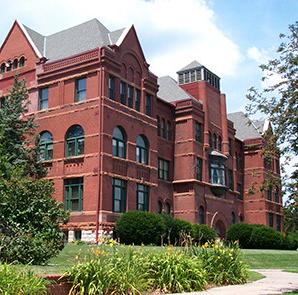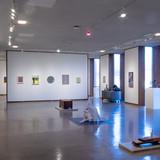Nebraska Wesleyan's 大画廊 presents Backloop: Curve Continuity, highlighting 可持续发展的 and affordable alternatives to common building materials.
The term “back loop” was first coined in Stephanie Wakefield's Anthropocene Back Loop: Experimentation in Unsafe Operating Space to describe when a period of growth is interrupted by an event of destruction and decay followed by regeneration.
去年, architect Jason Griffiths began to develop a building technique based off Wakefield’s idea. This technique incorporates modular, curved and cross-laminated timber using lumber from Nebraska’s native trees.
This technique highlights Griffiths’ research into composite timber that offers efficient, 可持续发展的, and affordable alternatives to concrete and steel. This will be the first time a completed structure will be displayed.
The geometry and scale of the structure are meant to the highlight the possible uses of certain Nebraska trees that are often considered unusable, like the Eastern Redcedar.
Contributors to this exhibit include Jason Griffiths, Eric断, Brendan Colford, Christopher Nguyen, Caroline Goertz, 雅各的城市, 科尔顿•科林, Christopher Bean, Pegah压力, 亚历克斯·马蒂诺, Muminjon Mirzoev and Elijah Velinsky.
The exhibition opened Saturday, July 16, with a reception on Friday, August 19 from 5-8 p.m. in 大画廊, located inside the Rogers Center for Fine Arts at 50th Street and Huntington Ave. Gallery hours are Tuesday-Friday from 10 a.m. 到下午4点.m. and Saturday-Sunday from 1-4 p.m. The last day for the exhibition is on August 20.
This project was developed by students from the UNL College of Architecture and Nebraska Wesleyan University under the instruction of Associate Professor Jason Griffiths and Associate Professor David Gracie.














